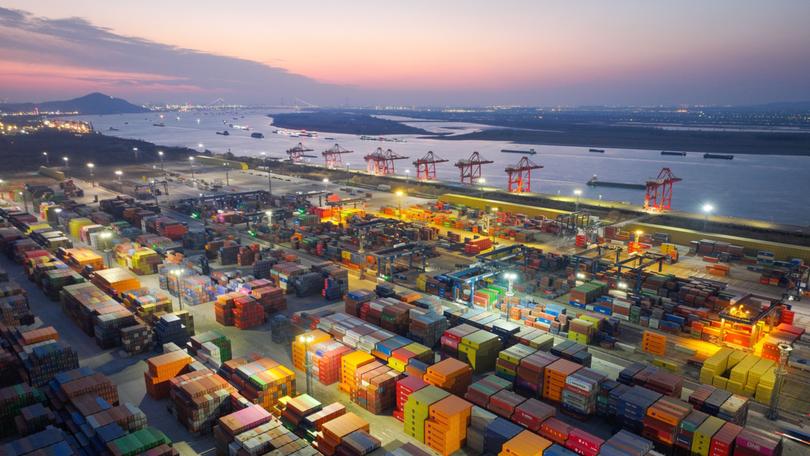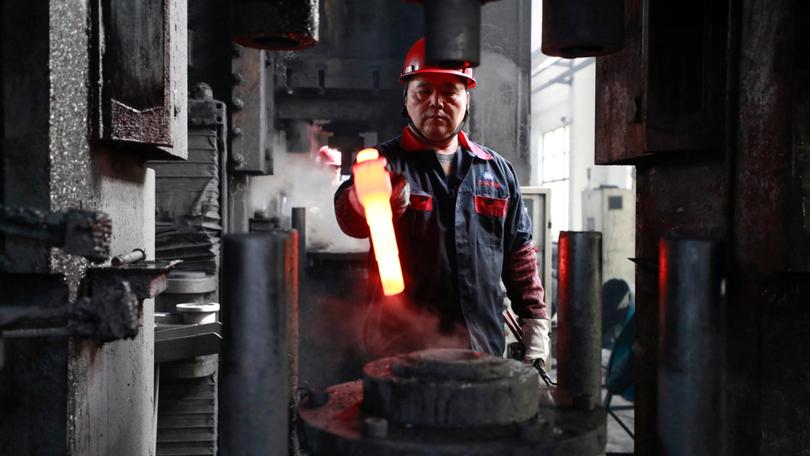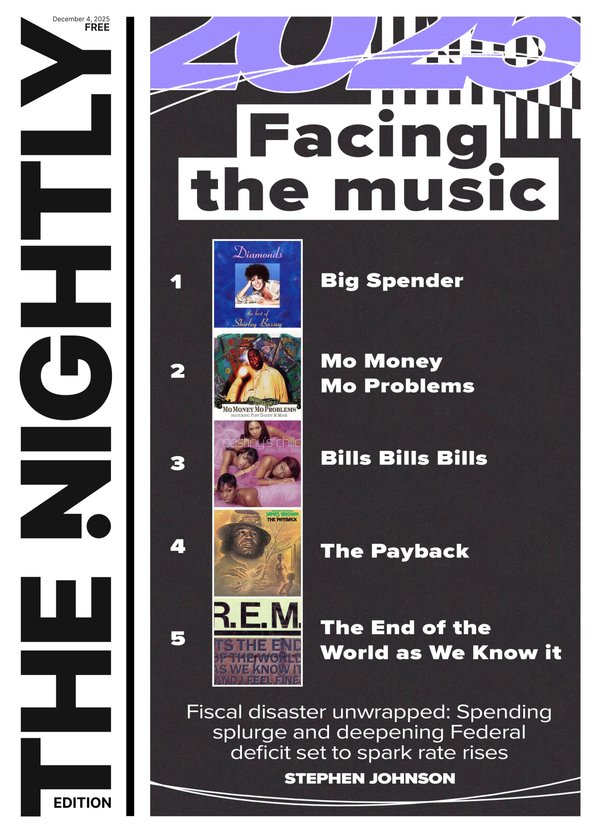JACKSON HEWETT: Steel deals can’t escape tariffs foiling global rebound

Anthony Albanese will lay his head on the pillow tonight praying he has done enough to keep the home fires burning for the Australian metals industry.
Jim Chalmers faces a sleepless night.
He will be worrying about the $220 billion in exports to China that prop up his budget and hoping that Donald Trump’s highly inflationary move won’t lead the Reserve Bank to keep rates on hold.
Sign up to The Nightly's newsletters.
Get the first look at the digital newspaper, curated daily stories and breaking headlines delivered to your inbox.
By continuing you agree to our Terms and Privacy Policy.Last week, S&P Global reported that Trump’s tariffs on Canada, Mexico, and China would crimp global growth. Canada and Mexico would be the worst affected, while China, which has largely managed to navigate tariffs since the first Trump administration, would be hit less severely.
The new round of global steel and aluminium tariffs, with “no exemptions” except potentially for Australia, further hampers economic recovery.
Slower US growth
The US has been an outlier in terms of economic growth, but despite an economy that is firing on all cylinders and near full employment, President Trump feels it deserves more. That’s a problem for a global economy still finding its footing.
The first challenge will be the impact on the US consumer, who bears the brunt of these tariffs. In Trump’s first term, similar steel and aluminium tariffs led to higher prices for downstream industries, adding approximately $US250 ($400) to the cost of a new car.
Protectionism hasn’t made the US steel industry more efficient. It has, in fact, done the opposite. Domestic steel is 40 per cent more expensive than in China and 20 per cent more expensive than in Europe.
It just makes things more expensive, with the Peterson Institute for International Economics finding that the 2018–19 trade war with China did not lower prices when hit with US tariffs. Instead, foreign exporters to the United States raised prices, increasing the burden on US consumers.
All told, the cumulative effect of Trump’s proposed tariffs, including those on Canada, Mexico, and China, would effectively tax US households an extra $US1200 per year, according to the Peterson Institute for International Economics.
And it hasn’t even saved jobs. The US Federal Reserve found that 75,000 fewer manufacturing jobs were created as a result of the original tariffs.
The US Federal Reserve will be watching the impact of Trump’s tariff policies for inflationary pressures, limiting the scale of further rate cuts that would have supported both American and global growth.
Former Department of Foreign Affairs and Trade chief economist and Lowy Institute fellow Dr Jenny Gordon said the dampening of global economic growth via increased costs for US consumers and industries reduces demand for exports from key trading partners.
“The US is a big market for a lot of things. And if you reduce the size of the US market globally, you reduce production globally.”
Retaliation concerns
A bigger issue will be how other countries respond.
Canada has already said it will impose retaliatory tariffs on US products, while China has said it will place tariffs of up to 15 per cent on US exports of coal, gas, and agricultural machinery.
The European Commission said it would protect its interests against “unlawful and economically counterproductive” tariffs.
“The EU sees no justification for the imposition of tariffs on its exports. We will react to protect the interests of European businesses, workers, and consumers from unjustified measures,” the statement read.
Tit-for-tat tariffs would harm all interests, Dr Gordon said.
“If every country raises tariffs in response, it will increase costs globally without delivering any real benefit. It’s like everyone standing on a box at a concert—no one gets a better view, but everyone is worse off.”
Australian Industry Group chief executive Innes Willox warned that a tariff war would be especially harmful to Australian manufacturers, given that it is a small, open economy.
“The tariffs would disrupt global trade flows with the risk that while Australia gained a direct exemption, our economy would still become a dumping ground for excess steel and aluminium.
“The Trump decision is a salient reminder that Australia must have a transparent and responsive anti-dumping system in place to help us navigate an increasingly volatile global trading environment,” Mr Willox said.
That global trading environment may well get murkier, with few beneficiaries.
According to research by the US Council on Foreign Relations, Trump’s imposition of tariffs on “national security” grounds has inspired a range of copycat measures, with more than 90 barriers to trade globally based on the same rationale.
The trend has unsettled some of the world’s largest investors.
A recent World Economic Forum survey of chief economists from the world’s largest companies and investment banks found that 61 per cent predicted US policy will lead to long-term structural shifts in the global economy. Ninety-four per cent expected further fragmentation of global trade as protectionist measures reshape supply chains and market access. More than half expected global growth to slow, while a significant number forecast higher inflation.
China’s response

China is expected to absorb the tariff impact again.
AMP chief economist Shane Oliver expects government stimulus will offset the near one per cent drop in GDP expected from the tariff hit.
China’s steel industry is enormous, but less than 10 per cent of its output is exported, according to Huw McKay, a former economist for BHP.
The bigger impact would be on Japan and Korea, which imported approximately $12 billion of iron ore from Australia and export around 20 per cent of their production, Mr McKay said.
Australia’s low-cost production holds it in good stead, with Dr Gordon suggesting that more expensive producers will be squeezed out of the market.
“Our mines are very, very efficient, and less efficient mines will cut their production first,” she said.
The longer-term question is how far China can hold if the US continues to turn the screws.
Michael Pettis, non-resident senior fellow at the Carnegie Endowment for International Peace and one of the world’s most influential China experts, argues that China’s economic model depends on expanding its share of global manufacturing.
China’s trade surplus is nearing $US1 trillion—the largest by any country in history. Domestic consumption cannot come close to absorbing that output.
“In order to keep production growing, China must either increase investment, and with it its debt burden, or increase its trade surplus,” Mr Pettis writes for the Carnegie Endowment.
Trade is crucial for China’s long-term future.
If the global economy continues to absorb China’s surplus, Beijing will gain more time to rebalance domestic demand and restructure its heavily debt-laden economy.
“If not, an even faster rise in debt will make the need to transform the Chinese economy all the more urgent for Beijing.”
If China is forced into a painful economic restructure, that is where Australia will face serious challenges.

